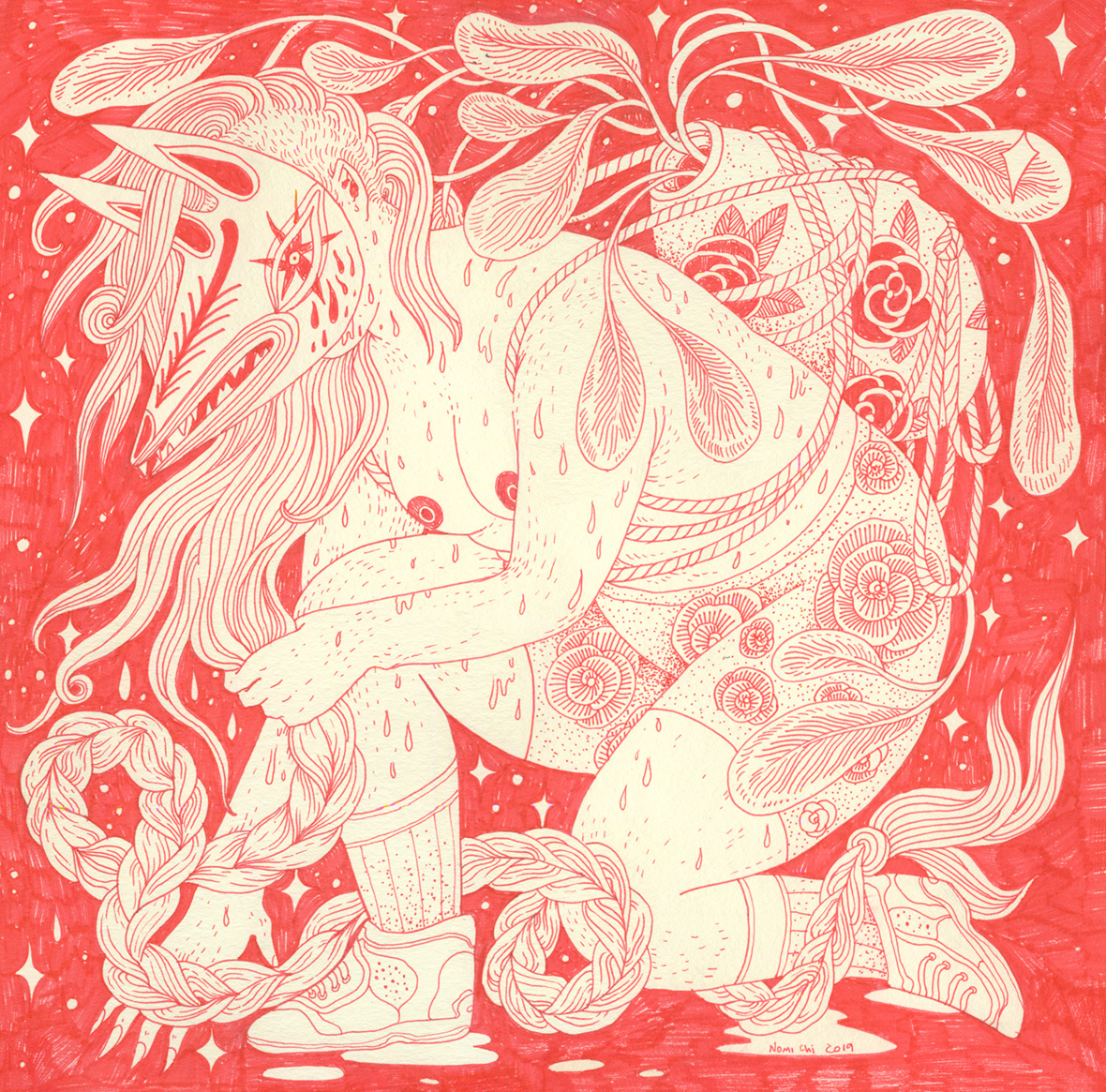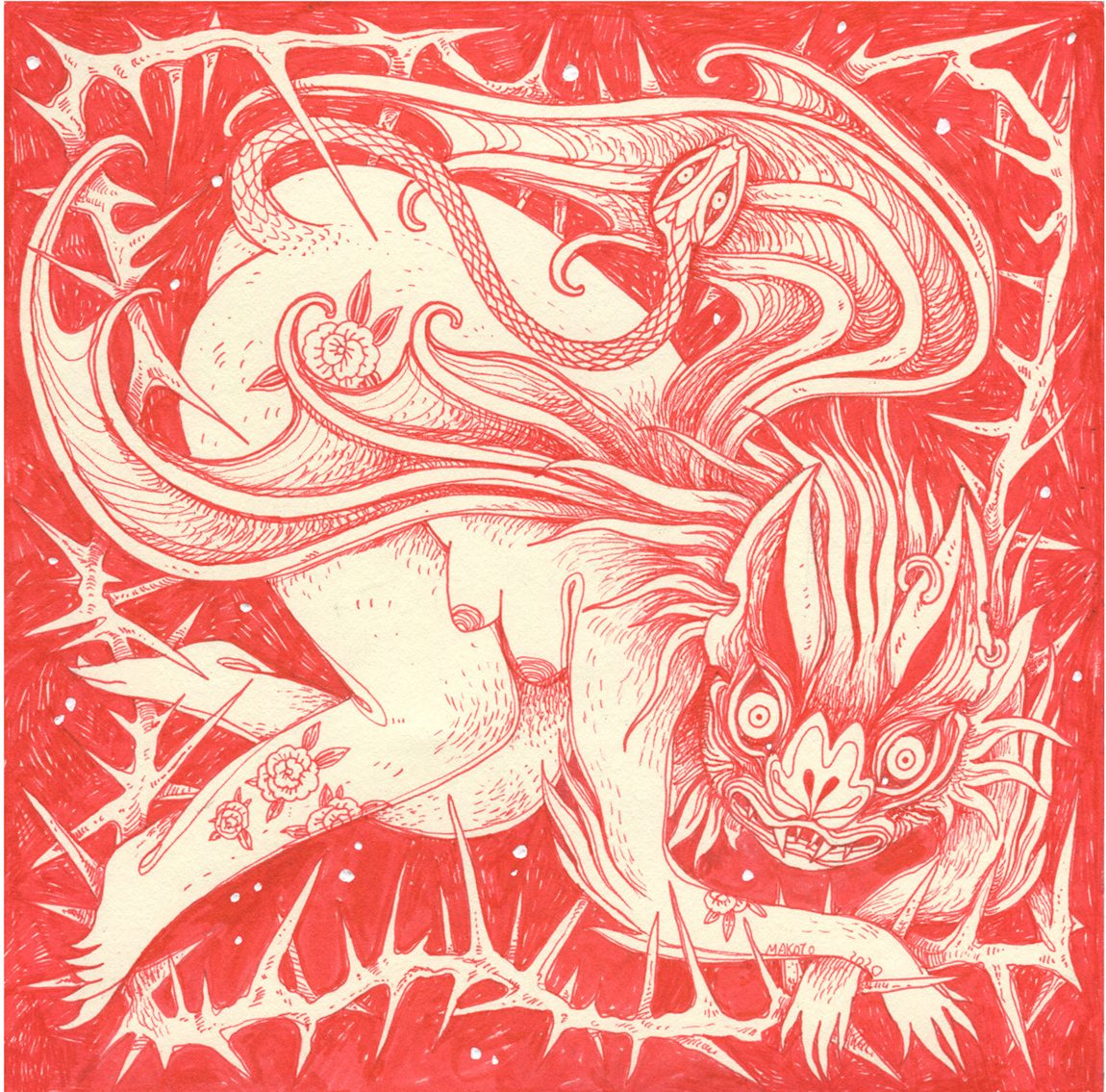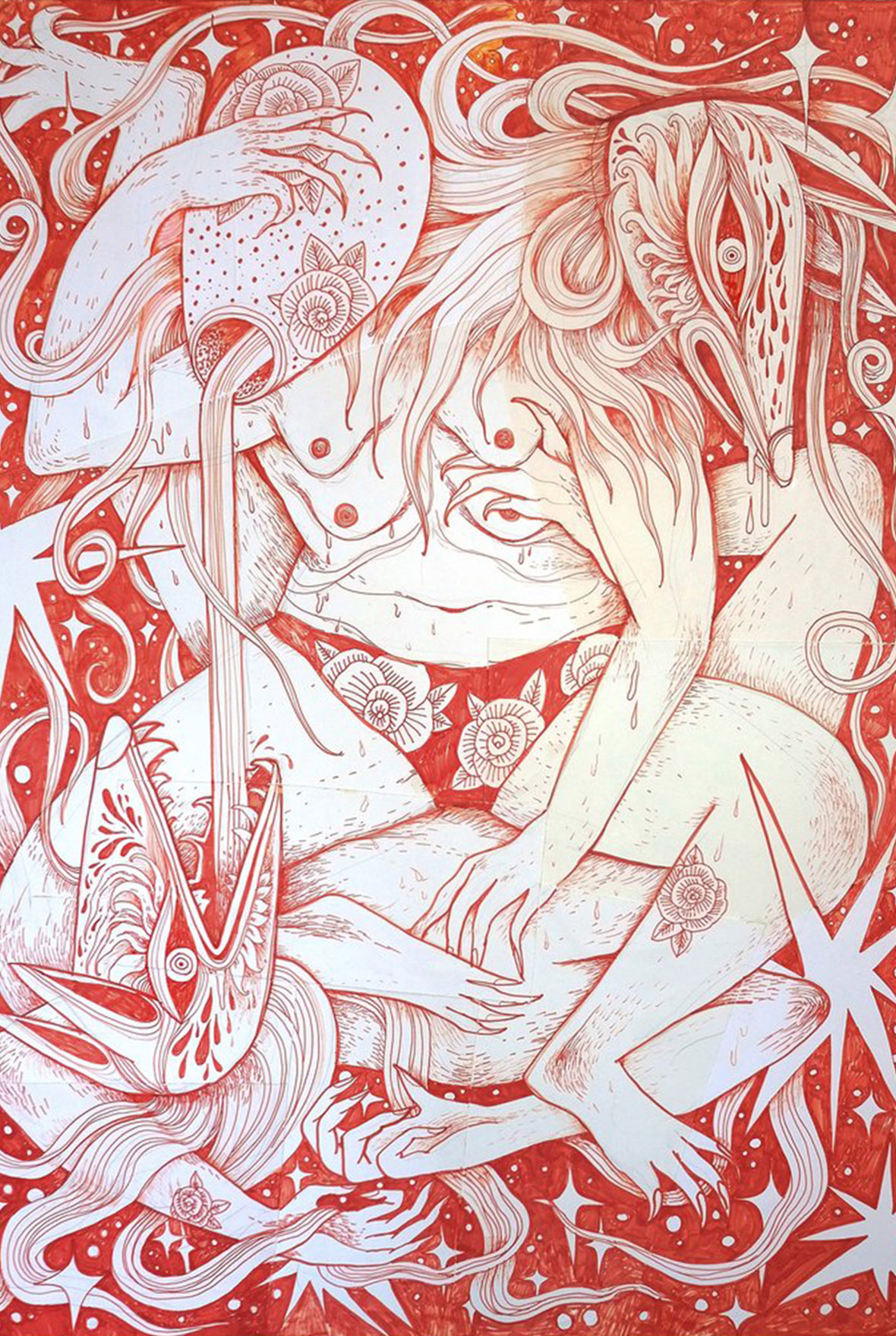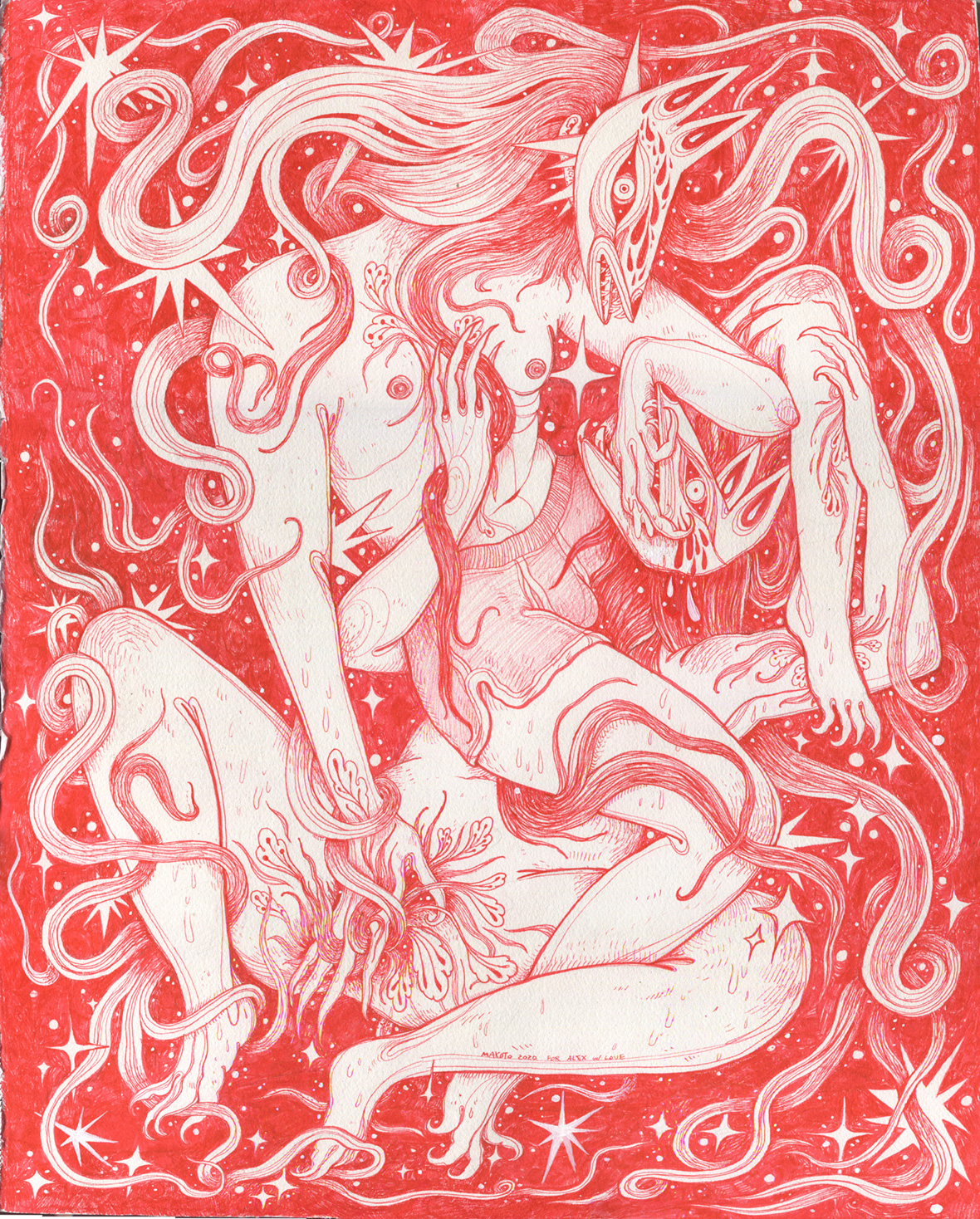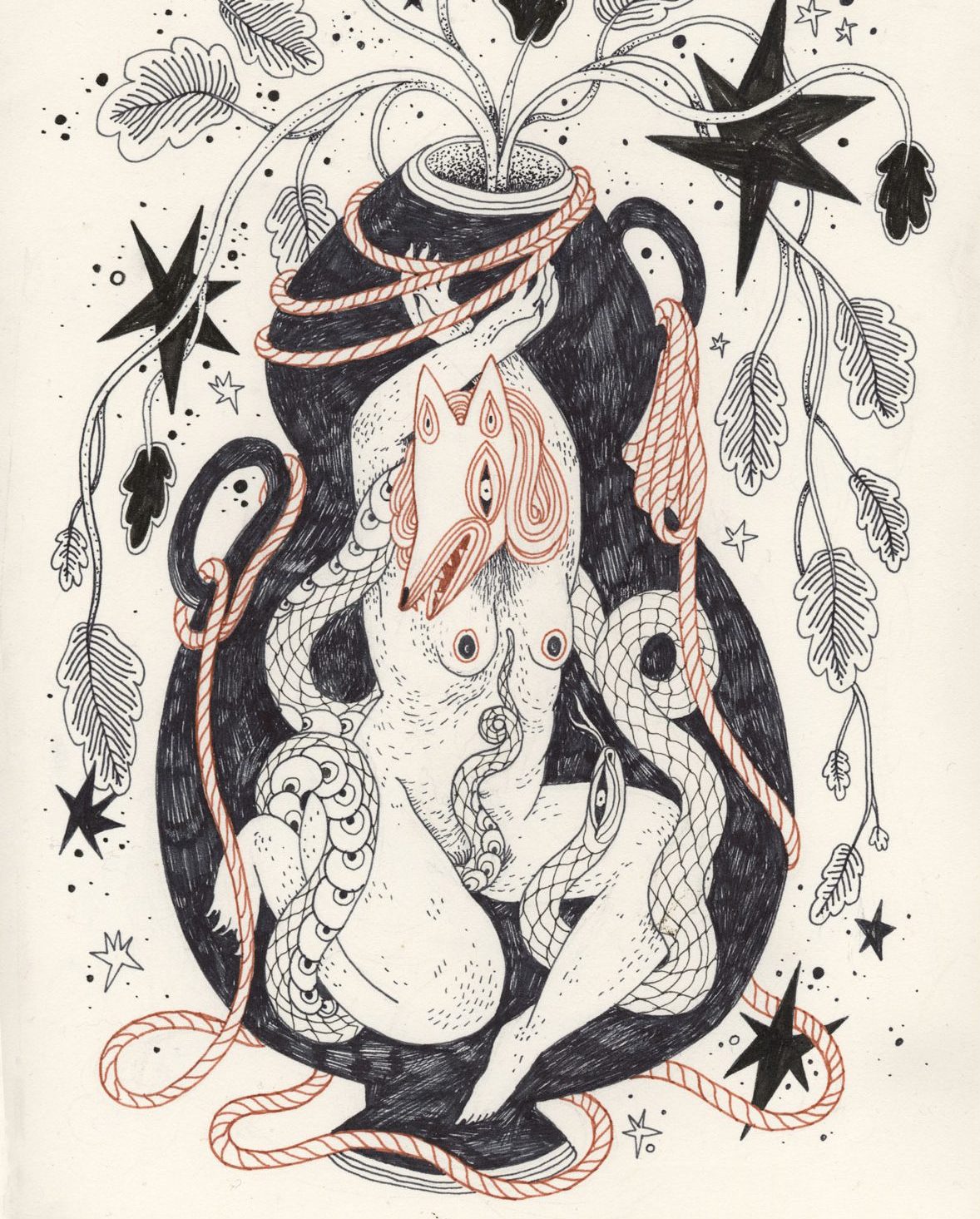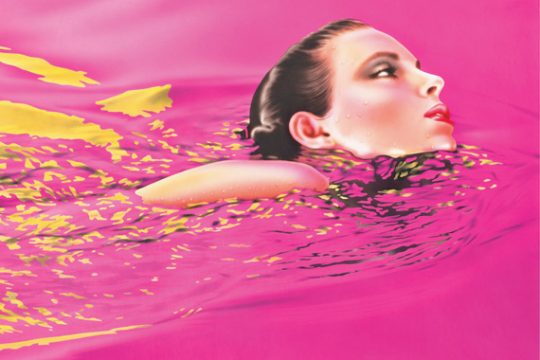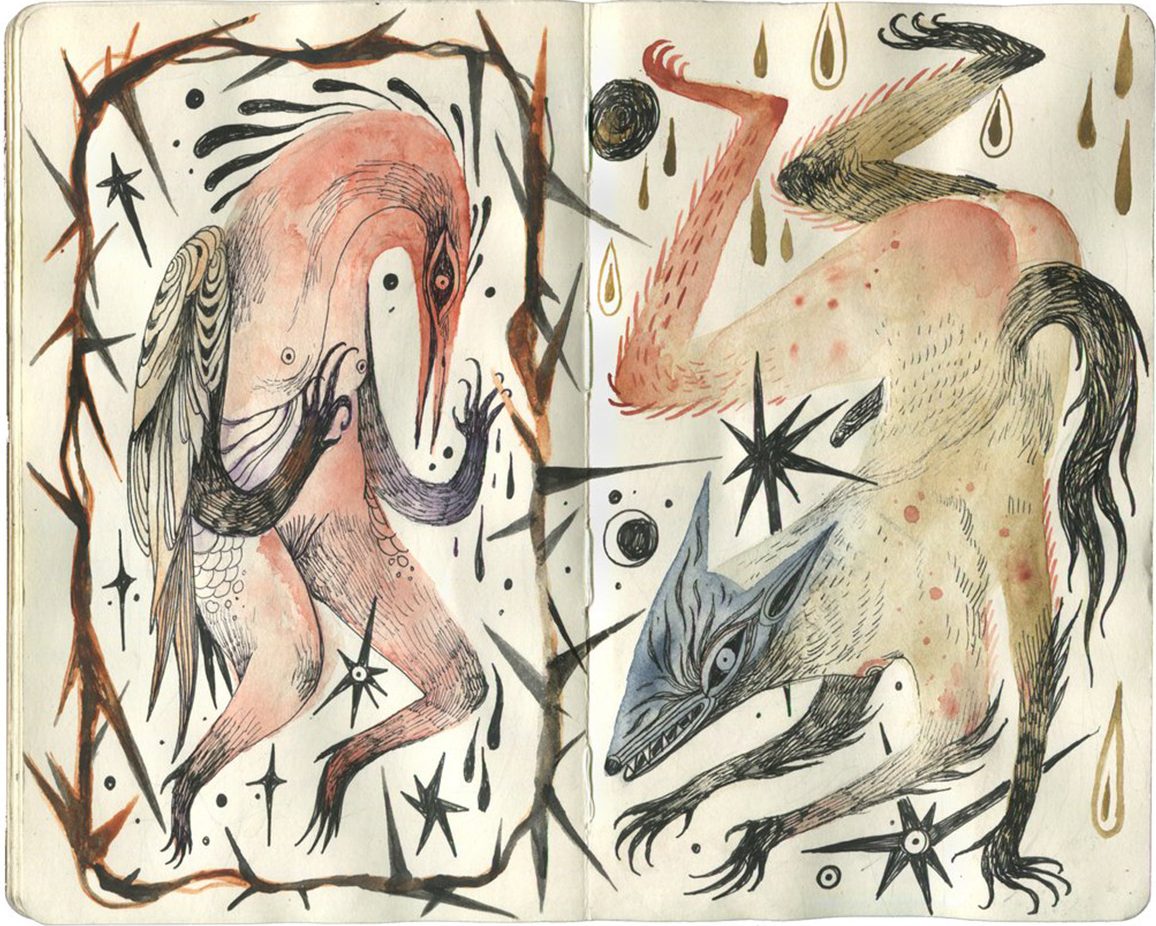
In Makoto Chi’s artwork, androgynous characters cloaked in animal masks writhe and twist, entangled in various sexual encounters and internal struggles. The creatures are wrapped in thorns, coiled with spikes and snakes, and live among constellations of stars. Together, they’re symbols of the artist’s inner desire to better understand notions of identity and human connection.
在 Makoto Chi 的作品中,雌雄莫辨的人物戴着动物面具,身体相互缠绕和扭曲,呈现出或性交、或挣扎的姿态。四周荆棘满布,尖刺和蛇缠与每个人身体缠绕在一起,他们背朝着星宿汪洋。所有这些元素加起来,展现了艺术家对探索身份认同与人际交往的内心独白。
Chi is a Candian artist of mixed Japanese and Jewish descent who identifies alternatively as him and they. Nothing is static in his world, whether that be gender, ethnicity, or style. His work overflows with cryptic iconography, telling a story through indecipherable symbols. “There are subjects I return to often. They can infer different things and those meanings are mutable or impactful depending on how I chose to mix them,” he says. “My art practice feels a little like hunting or tag: mostly chasing and trying to tackle slippery emotive states that are hard to pin down, as opposed to illustrating concrete ideas.”
日本、犹太混血的加拿大艺术家 Makoto,时而以男生自居,时而自认性别流动。无论性别、种族还是个人风格,所有一切都会随时在他身上发生变化。他能以晦涩难懂的符号讲述故事,其中充斥着令人匪夷所思的肖像。“一些元素我会反复运用在作品中,它们对应着不同事物,但具体含义则取决于我如何组合这些元素。创作时,我感觉自己像在狩猎,追逐并尝试抓住那些难以捉摸的流动情绪,不想表达某个确切的想法。”他说道。
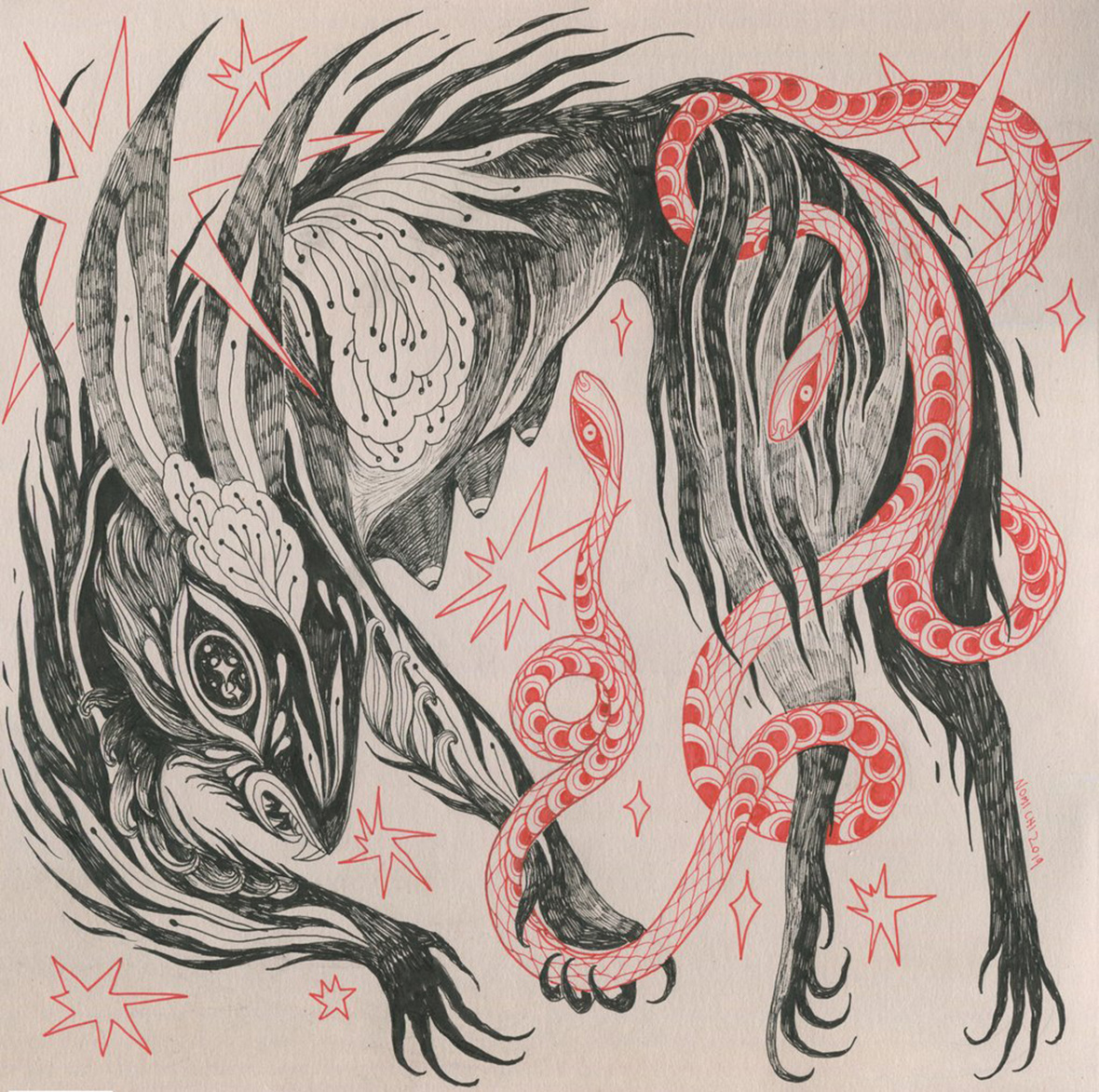
He works within a minimal color palette, relying mainly on bold reds but also creams, blacks, and whites. “I’d spend big chunks of my year traveling with only enough space and energy to carry pens and sketchbooks, which lent to working monochromatically,” Chi explains. “This has since become a stylistic compulsion.” The materials he uses are mainly still pen and ink on paper still, but recently he’s been including gouache and oil as well. He’s also begun collaborating with other artists a bit, such as the pieces with his partner, Noel’le Longhaul.
作品在色彩的处理上极其简约,由大胆的红色填充,乳白、漂白和纯黑色点缀其中。Makoto 解释说:“一年中大部分时间都在旅行,行李也只允许携带少量的绘笔和素描本,单色作品对我来说更容易实现。后来,这种创作习惯潜移默化地形成了我的个人风格。”目前,Makoto 的创作原材料基本上由笔、墨、纸构成,不过最近他也开始尝试水粉和油画的创作。与此同时,他还会经常与其他艺术家展开合作,例如纹身师 Noel’le Longhaul。
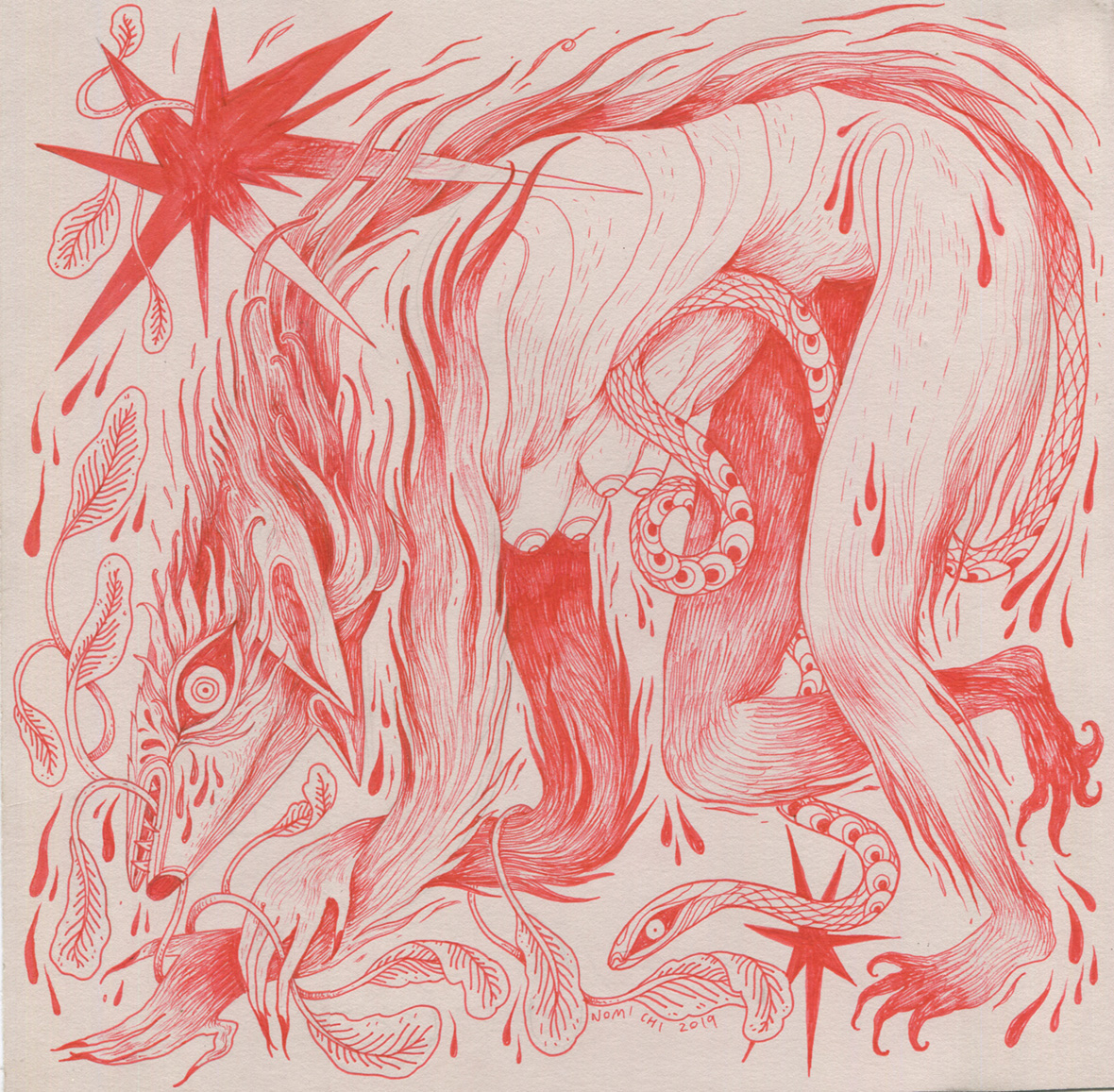
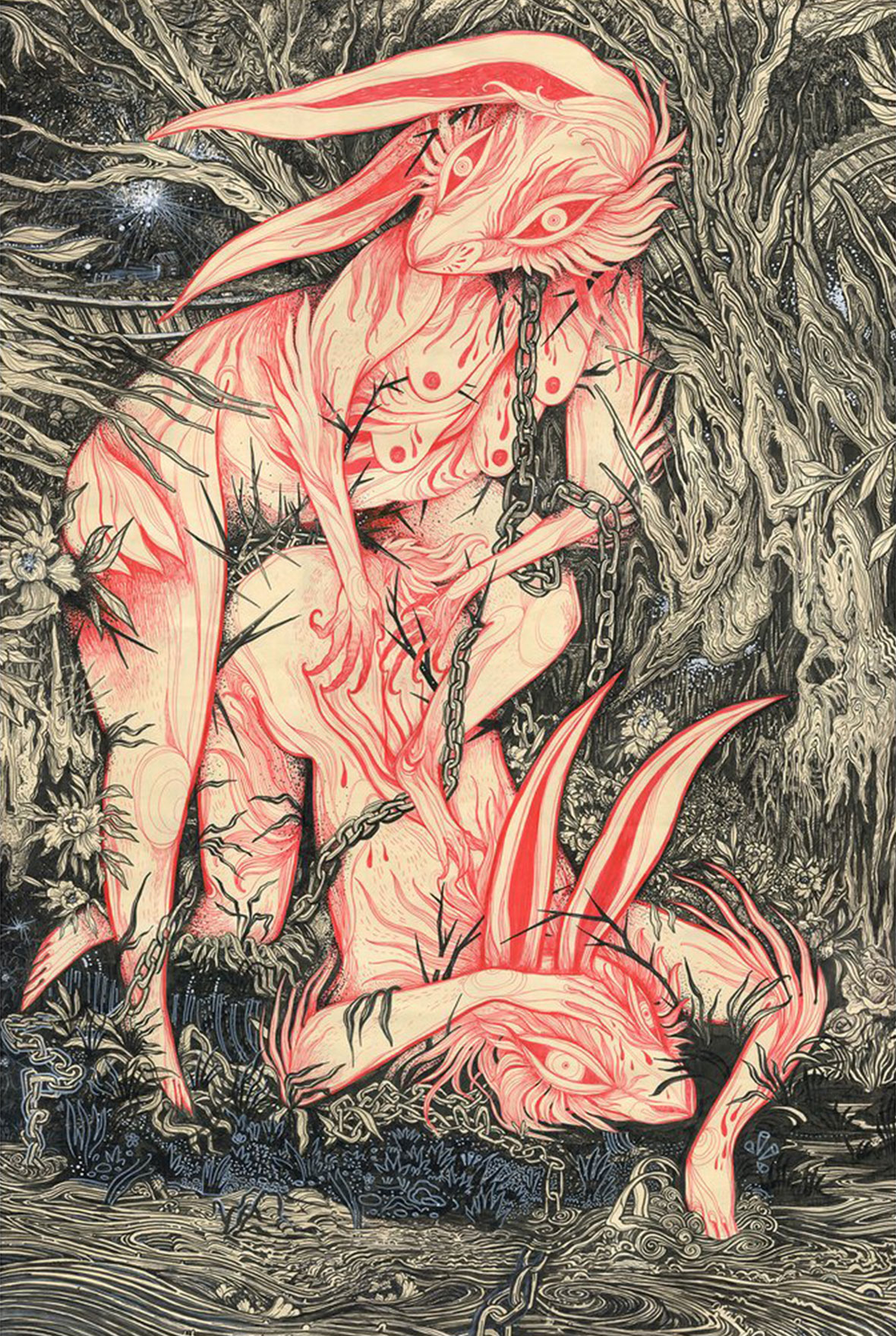
Chi doesn’t elaborate on what meaning the masks hold, other than to say that they’re dramatic and fun. He also says that while the East-Asian influences in his work can be easily spotted, his artwork is more about reflecting on being a mixed-race, diasporic individual rather than identifying with any one part of themselves. And his characters are chimeras, not one type of creature but a mix of many. They’re also gender fluid. “Maybe I’m being glib, but I don’t want to spend my energy painting cis people,” he laughs. “My life is full of amazing people whose genders and gender expressions are understood as marginal. Beyond normalizing or representation, I just care about this fulfilling aspect of my people and I want to emphasize and express that importance.”
对于作品中面具的含义,Makoto 没有过多解释,他认为面具的出现纯属为作品增添趣味和戏剧性。而在面具的包裹下,人物的身份往往被隐藏。他随后补充说道:“我的作品深受东亚文化影响,但更多的是思考混血身份和流散个体的问题,而没有倾向于任何一种的身份。”
画中的角色取名为奇美拉(Chimera),它们的性别并不固定,呈现一种杂交的美感。他笑着说:“因为我比较懒,总之我不是很想花精力去画二元性别的角色。我身边有很多很了不起的人,拥有独特的性别表达方式。我想在被规范化的社会或主流之外,更多讨论我们这个群体的正面,用作品传达其重要性。”
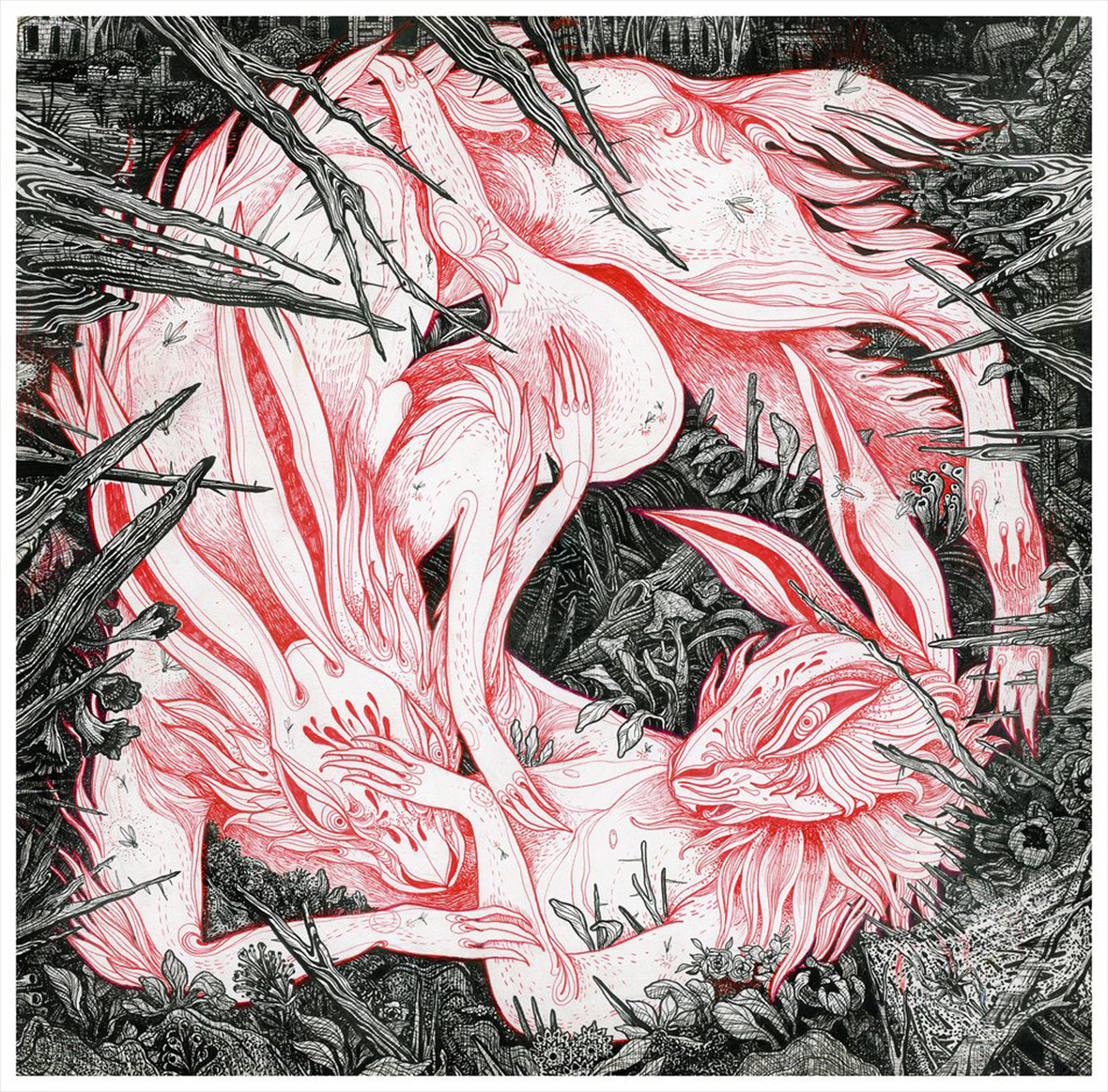
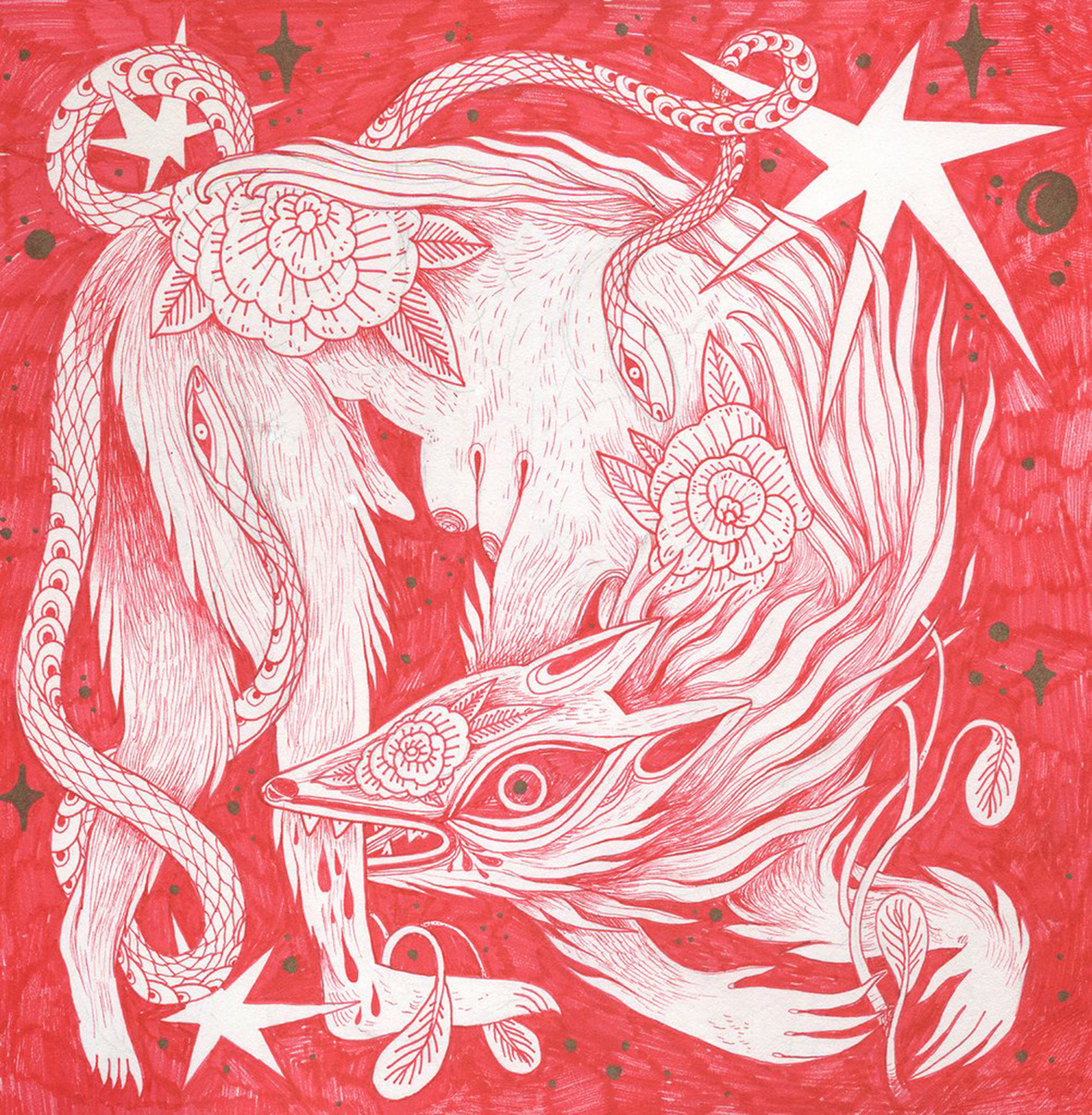
Sexuality is the most prominent theme in Chi’s work, with his uncanny beasts regularly taking part in rough physical encounters. “Power exchanges are important and erotic to me, but I don’t intend to communicate suffering or fear,” he says. “There’s a lot of care, tenderness, and euphoria folded in with the hard edges where my figures interact. Mixing gentleness with loving, delicious force is integral to how I experience and communicate bodied communication and sensuality.”
不可否认,性是 Makoto 作品中最突出的主题。各种怪诞野兽彰显出狂野的性交姿势。他说:“生物间力量的互换是很弥足珍贵的,同样也很情色。我并不希望在绘画中表达痛苦和恐惧,反倒在粗暴的姿势下,匿藏关爱、温柔和性感的灵魂。那些温柔的线条下,饱含着我对爱、快感、力量的敬畏。这是我体验和理解身体交流以及性爱过程的重要方式。”
Like our stories? Follow us on Facebook and Instagram.
Instagram: @makoto.chi
Contributor: Mike Steyels
Chinese Translation: Olivia Li

